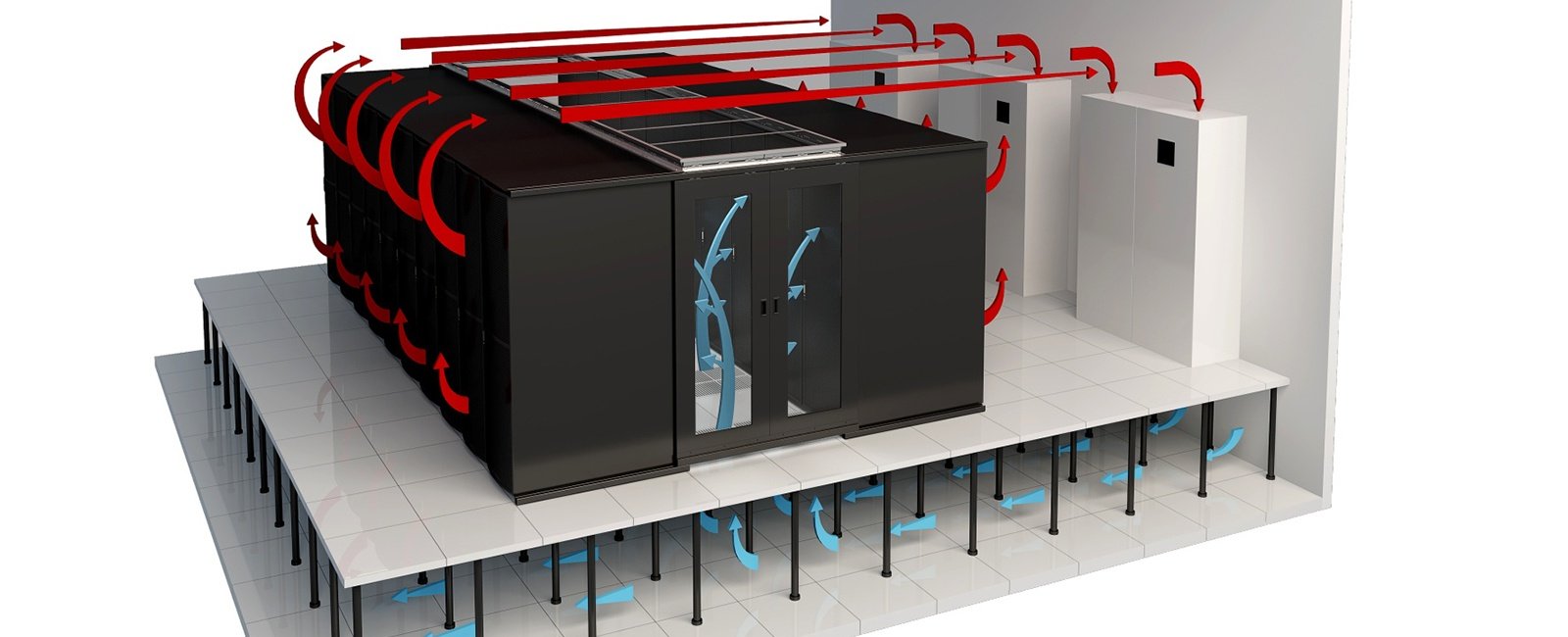Better Data Center Performance Comes Down to Thermal Management

Let’s first define “thermal management.” You may hear the word “cooling” in thermal management conversations, but it doesn’t mean just supplying cold air (although that is one element of thermal management) it also includes rejecting the heat that is being created by the IT load – in fact, air-conditioning in a data center typically accounts for 35% of total operations costs. The goal is to ensure that hot and cold air don’t mix, and to reject hot air inside the data center by taking the hot exhaust from equipment and moving it outside the space.
By first rejecting as much hot air as possible, you don’t have to provide as much cooling – which means you’ll save money. Here’s an example: Let’s say you need an inlet temp to be between 70 and 77°F (per ASHRAE standards). The set point of your CRAC unit will depend on how much air mixing occurs. If there is lots of mixing, you may need to set your CRAC unit to as low as 65°F just to reach an inlet temp between 70 and 77°F. If you changed the supply air to be 68°F, however, you’ll see big cost savings. According to ENERGY STAR, data centers save 4% to 5% in energy costs for every 1°F increase in server inlet temperature. That money goes right back in your pocket.
Basic Efficiency Measures
Would you turn on your home air-conditioning when the windows are open? The first step in making sure your home air-conditioning works effectively is making sure doors and windows are closed. You can think of the following information in the same way. These very basic first steps will go far in preventing hot air from recirculating, as well as reducing bypass air. And most of them can be completed without help from a third party.
Blanking panels. Every data center administrator should understand the importance of blanking panels, but they’re often forgotten as servers are removed or changed to different u-slots. When the resulting holes aren’t blanked off, the cold air being supplied to the room can easily skip into the return – which translates to 100% waste. The money you’re spending to cool the space might as well be thrown into the trash.
Sealing. Unsealed spaces between the rails and the side panels is another often-forgotten factor. Installing rubber stripping or sealing kits can help; depending on the type of enclosure you purchase, this may come as a standard option. The same applies to the space between the rack and the floor or the space between a rack and an obstruction like a support column.
Cable clutter. Another potential opportunity for waste reduction is addressing cable clutter. Cables entering or leaving a rack or raise floor tile create gaps for air to escape. Simple fixes like brush guards can help eliminate this lost bypass air.
Other considerations. Ensure that vented floor tiles are in the correct location, and that CRAC units are working in sync (both humidifying at the same time, for example).
Next Steps: Containment
Data centers follow the basic model of putting cabinet fronts together for cold aisles and cabinet rears together for hot aisles. Containment is the best way to keep hot and cold air separate at the row level, ensuring that the hottest air enters the CRAC unit and the cold air is at the front of the IT gear. But even the very best containment systems lose efficiency or completely break down if the basic measures mentioned above aren’t implemented first.
Row-based containment. Also known as aisle containment, this strategy provides separation on either the hot aisle (HAC) or cold aisle (CAC), allowing you to prevent air mixing and reduce bypass air by containing the hot or cold into a pod. There are pros and cons to both HAC and CAC systems.
Typically appropriate for in-row units, HACs can create a much cooler room; supplemental cooling may not be needed. Performing service work in the hot aisle will be uncomfortable, which means that IT staff may need to bring in fans, open doors, etc. Once their work is done, it’s important to make sure the space is put back together correctly.
In general, CACs are a quick, easy way to gain efficiency with traditional, perimeter-based units. Understanding your cooling topology is key to knowing whether cold aisle containment will work in your data center. With a CAC, the room will always seem warmer because cold air is contained. This might mean that supplemental units will be needed for perimeter-based IT gear or workspaces.
Rack-based containment. This method provides a ducted return to the CRAC unit via a chimney on the back of the rack. A fan pushes the hot air into the plenum. This prevents hot air from mixing with the cold, providing for the hottest air being returned.
![System.String[]](https://assets.belden.com/transform/5a5cfdb0-3d15-410d-9424-43633897f39e/mike-peterson?io=transform:fill,width:300,height:300)